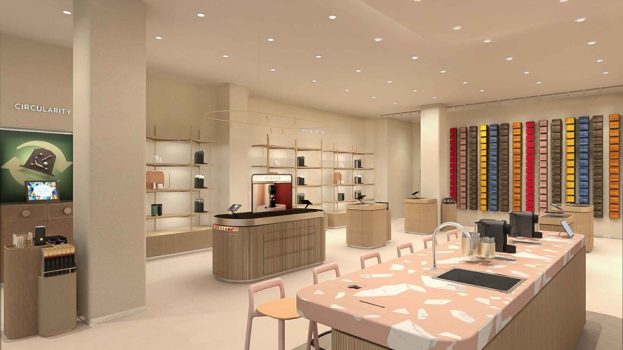How do other countries stack up when it comes to retail design? DW+Partners’ director of retail strategy Edward Rajewski shares a few examples of how convenience stores are being taken to a whole new level around the world.
The U.S.: Sheetz
Proclaiming itself a “mecca for people on the go,” Pennsylvania-based Sheetz is a chain of hybrid gas stations/convenience stores/QSRs open 24/7 with 365 locations in six states.
“The look and feel of Sheetz is very retro but when you go inside, they’re very sophisticated,” Rajewski says, noting that they use interactive technology so that all orders are placed on digital screens.
Rajewski says he was blown away by the chain’s focus on branding and attention to every little detail – from the smallest in-store signage to their fleet of vehicles. Sheetz represents how sophisticated convenience has become in the U.S. and how in-touch with customer needs it is – a good example of where similar retailers could go north of the border.

France: Monop
Monoprix in France is as ubiquitous as Shoppers Drug Mart here in Canada. The large-format stores offer everything from clothing to pharmaceuticals, but it’s the company’s foray into smaller convenience-sized shops that’s noteworthy.
Called Monop (there is also Dailymonop and Beauty Monop), the little stores are based on a fresh-to-go concept, offering everything from baguettes to coffee and wine, aside from the typical convenience fare. Each Monop has a different look and feel, a sort of macro-marketing approach based on neighbourhoods, which comes down to how they perceive their customers’ needs, explains Rajewski.
Monop also stands out for going against the typical quick-in, quick-out attitude of convenience by including elements meant to keep customers around, like small flip-down tables and wireless access in Dailymonop stores. “It’s the kind of place you want to hang out, you feel comfortable, almost as if you’re walking into your home,” says Rajewski.

Japan: Happy Lawson
Originally an American chain, Happy Lawson entered Japan in the 1970s. The mom-friendly stores provide toddler play areas and an array of services that seems mind-boggling: you can buy fresh food and alcohol, order home appliances, book an airplane ticket, buy concert tickets, drop off luggage for the bullet train, sign up for driver’s ed and even pay your income tax. Each store looks a little different, but they’re all recognizable by the iconic smiling-face logo.
But would the ultra-one-stop-shop Happy Lawson model work here? Ultimately, convenience stores are a reflection of the culture of that society. What consumers want and expect in France or Japan differs from what we want here in Canada, and at the end of the day, says Rajewski, retailers must ask themselves, “what does my brand represent and what do I want my customers to think of it?”
Jump to:
Grand & Toy targets small business























